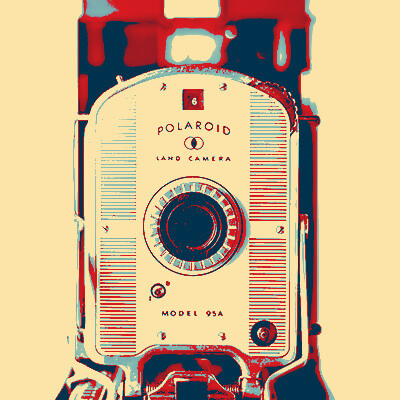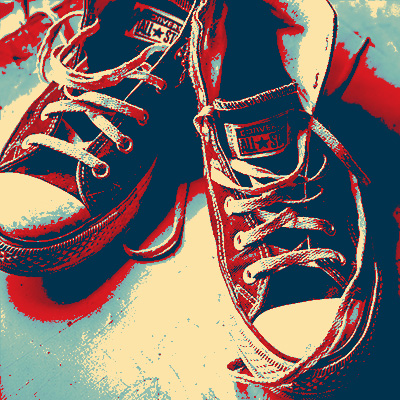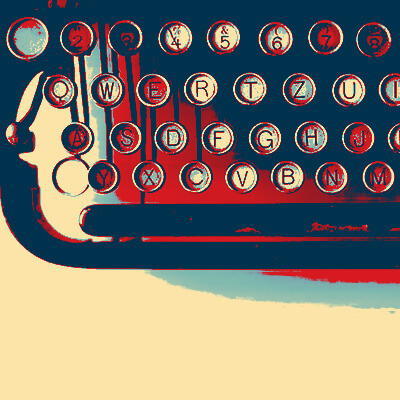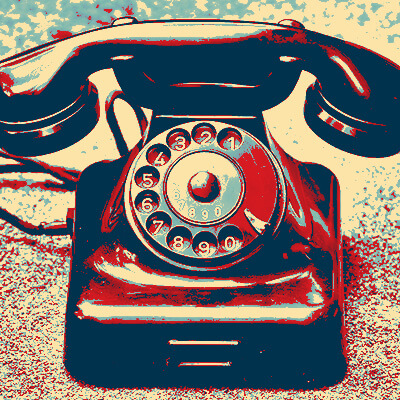Outstanding trainers with expertise and a lot of patience at a fair price. I have used them for two years and they have given me a much better understanding of the in's and outs of how to use many aspects of my computer. It is a pleasure to have them come to my home and work on my own computer problems.
Need Help? Call Us.
877.201.3586
The GroovyTek Groovy Guide & Glossary

4k
At this time, 4K represents the highest quality of high-definition video.
[4K has even better resolution (more lines) than 1080p, but it also requires more space for saving video recordings.]
1080p
A description of high-definition video quality.
[1080p is the most common HD-quality picture we come across these days. Our original TVs had a video quality of 480 lines on the screen, also called “standard definition” TV. 1080p adds many more lines of resolution, which results in a better-quality picture.]
Address Bar
On your internet browser, this is where you type in a web address, e.g., “Google.com.” The address bar also shows you what website you’re currently on.
[In addition, the address bar gives you the opportunity to move to a different website. For example, you’re on Google.com and you want to go to Netflix.com. Type in “Netflix” and you’ll be given the options to visit the Netflix website.]
Apps
“Apps” is short for applications—a program you can access on your computer or mobile device. For example, most banks have apps designed to allow you to access your accounts.
[Apps are designed to provide direct links on cell phones and tablets to perform specific tasks or provide specific services and information. For example, there are apps for a calendar, stocks, weather, time, calculators, maps, Uber, games, tickets, and thousands of other services and sources of information.]
through GroovyTek’s over-the-phone membership.
Backup
A backup is a copy of files you can use in case something happened to the original file. You can backup photos or other file types to protect against the event that your phone or computer stop working.
[First, protect your work or files by saving them. However, even that won’t help if your computer or phone is damaged or fails. To backup, you copy your data and files to a separate device, like an external hard drive or the cloud. Then, if the files are damaged or lost on your phone or computer, you can restore or recover them using the separate device.]
Browser
A program that allows you to view websites on the World Wide Web.
[Some examples of browsers you may already be using are: Firefox, Google Chrome, Internet Explorer, Microsoft Edge, Safari. The one you use is a matter of personal choice, like which dictionary you prefer.]
Buffer
This is a fancy word for loading. For example, a video needs to load before it can play.
[Think of buffering like a holding pen; it’s a temporary storage place while making a transfer. That’s what a buffer does while moving something, like text or a video, from storage to use.]
Burst
A feature of a smartphone or tablet’s camera; using it takes multiple shots while you hold down the photo button.
[Great for action shots, like capturing a baseball player’s swing or the unpredicatble behaviour of grandchildren.]
Cellular Data
Cellular data is what is used to browse the internet when Wi-Fi isn’t available.
[Data is also used for sending/receiving email when you’re away from home or not using Wi-Fi service.]
Data Plan
A data plan is what you pay your cellular phone carrier for each month.
[Your mobile service provider (e.g., AT&T, Sprint, T-Mobile, Verizon) offers data plan options that keep you connected to the internet on mobile devices, even when Wi-Fi links aren’t available.]
Desktop
The desktop is the main screen of your computer where you can save files and also place shortcuts.
[The desktop is what you see after you turn on your computer. Shortcuts are direct links to sites, files, or programs you routinely use.]
Devices
Mobile phones, tablets, and laptops.
[Mobile phones are often called “smartphones” when they can access the internet. Tablets typically look and act like a large mobile phone, but may have more computer-like capabilities; they may or may not be able to make phone calls.]
to make sure everyone’s ready to go with their technology.
Domain Name
The name or address of a website that is on the internet.
[You might also hear “website address.” GroovyTek’s domain name or website address, for example, is www.groovytek.com.]
Download
When you want to save or add content onto your computer or other devices.
[For example, when you buy a movie, you may have an option to “download” the movie onto your device—you can then watch the movie without needing an internet connection. You also download new software to make your computer or mobile devices work better, or download programs to add new functionality.]
A method to send messages to one or many people using one of your devices.
[Email is like sending a letter, where you provide a subject, salutation, body, and a close. You can send an email to one or many people (a “group message”), and it’s easy to include documents or images as attachments.]
Emoji
These are little characters, like smiley faces, objects, or symbols, that can be used while texting or sending emails.
[For most of us, emoji can be more confusing than effective ways to communicate. However, if you long for hieroglyphics, emoji are for you.]
eReader
An electronic reader; it’s a small, thin device, like a Kindle or Nook, that displays books or magazines on a screen.
[You can store hundreds of digital books, magazines, or articles on an eReader, making them great for traveling.]
External Storage
This could be a USB drive, external hard drive, or an SD card. All of these hold files and content for you to transfer, or if you wanted to just keep a copy of something safe.
[Think of it this way: you may have an actual safe, or just a safe place to keep money in your home, but you feel more secure putting large sums of money in “external storage”—a bank. That’s how it is with your personal technology; your computer or your cell phone, for example, provide storage, but you might feel a lot more secure if documents or photos were also stored somewhere else.]
Filter
One type of filter helps you narrow down a search to more-relevant information. Another type of filter is used to change the coloring of digital photos you atke with a phone or tablet.
[The search-related filter could be used, for example to reduce restaurant search results to just those with Italian cuisine. The photo-related filter can make changes to photos you’ve taken, such as changing a color photo to black and white, oldfashioned sepia, or to make it look like it came from a Polaroid camera.]
Firewall
This acts as a filter between systems/programs you trust, and things that may compromise your computer.
[Think about most large public buildings; notice that in the event of an emergency, they can be closed off into isolated units so that a fire or disruption in one part doesn’t contaminate the whole building. It’s similar with your personal technology—you have a base you routinely use and trust, but you are also bringing in new stuff all the time. A firewall isolates the new stuff until it is more safely integrated into the stuff you routinely use and trust.]
GB
A “gigabyte or gb” is a unit of measurement for a device’s storage. The more gigabytes the device has, the more storage it has and the more information you can keep on it.
[Here’s some context: one gigabyte of memory can hold either approximately 350 good-quality photos, or about 180 high-quality songs. One gigabyte is actually too small to hold a two-hour movie.]
GPS
Global Positioning System.
[It’s the set of satellites in the sky that help our mobile devices tell us where we are within a map app or program.]
GeoLocation or Current Location
This is a fancy term for when your phone displays your exact location (for map apps or weather apps, as examples).
[Geolocation is a method that typically uses radio frequency or satellites to locate your phone or computer. Then, your phone or computer can report it to you or anyone else who is tracking you (various location oriented apps), with your permission.]
HDMI
“High-Definition Multimedia Interface” is a connection that allows you to watch highdefinition content from your laptop, cable, or satellite TV boxes, or streaming TV devices.
[What’s great about HDMI is that you get both a digital audio and digital video connection with just one cable.]
Hard Drive
A small storage device used to store documents, photos, videos, and other data that you create on your computer.
[Computers include a hard drive inside. “External hard drives” connect to the computer using a cable and can be easily transported.]
Home Screen
When you go to the internet, this is the first page that comes up each time you open your browser. You can change this to be whatever web address you would like, for instance, Google, or your email account.
Hyperlink
Usually while you’re using your web browser, you can click on a “hyperlink” to take you somewhere else. You can go from page to page just by clicking the hyperlinks.
[Hyperlinks are links within a document or webpage that you can access by clicking or tapping, or you can view the link’s address by hovering over it with your mouse. Text with a hyperlink is typically blue and has an underline like this: visit GroovyTek! Sometimes images are hyperlinks to other information or webpages. You can often see something is hyperlinked when you use your mouse or trackpad to move over text or images—the mouse pointer changes to a little hand-shaped icon.]
Inbox
In your email account, your inbox collects all of the emails that people have sent to you.
[It’s like your mailbox at home.]
Internet
Also called the “World Wide Web” (or just “the web”), the internet connects our computers and mobile devices together to help us obtain information and communicate with others around the world.
[It’s like a giant library, and websites are like the books, providing a way to categorize information based on subject matter.]
Landscape
When referring to taking photos with a mobile device, it’s about orienting your device so the device is horizontal.
[A photo taken in the landscape orientation will fit better on the newer TVs and computer screens.]
Keyboard Shortcuts
These are functions you can use with your keyboard instead of using your mouse or touchpad. An example would be to copy and paste. Instead of right clicking on the text to select the function, you can use the keyboard shortcut to do it.
[There are multiple ways to do most things you’ll want to do on your technology tools, such as print, copy, paste, and search. Using combinations of keystrokes on the keyboard is one way to accomplish these actions. We describe common keyboard shortcuts in this book. Whether this is a “shortcut” largely depends on two things: your own habits and preferences, and whether or not you know the required keystroke sequence!]
Malware
Malicious software.
[It’s placed on your computer in one sneaky way or another, and harms your computer. There are programs that are typically included with your computer to recognize and attack these intruders without you needing to worry about it.]
Near Field Communication (NFC)
This allows you to pay for things with your phone. It transmits your credit card information to the payment terminal.
[Android Pay and Apple Pay are examples of features using NFC.]
OS
This means Operating System, whether it is on your phone, tablet, or computer.
[Think of your voice box and English. Your brain is a kind of operating system; it organizes the hardware (your voice box) with the software (English), making usable communication possible. Operating systems organize and manage hardware and software to provide you with a usable service from your mobile device or computer.]
Panorama
Also called “Pano,” this is a photo option on mobile devices that allows you to take wide photos.
[This format is great for expansive landscapes or large group photos.]
Personal Hotspot
You can turn your smartphone or tablet into a Wi-Fi connection for other devices. For example, if you need to connect your computer to the internet, you can use your phone’s wireless connection through its “personal hotspot.”
[It is important to note that these hotspots need to be part of your plan with your cellular phone carrier.]
Phishing
A scam that attempts to make you divulge your personal information for malicious purposes.
[Phishing often occurs through a phone call, text, or an email message. An email may look like a legitimate organization is trying to contact you; they do their best to look official (e.g., bank, federal office), but there are almost always slight errors in the message, and links to fake websites.]
Pinch-In / Pinch-Out
This allows you to zoom in or out on certain content on a device with a touchscreen. If you were looking at a photo or on your maps app, you could zoom out by pinching your fingers together. Pinching out zooms in on certain content.
[This is when the “new” is mostly “old.” It refers to a zooming function that brings you in close or spreads out the image much like cameras with lens adjustments, and on binoculars. The difference is that rather than turning a knob or dial, you now use a pinching motion with your fingers on the touchscreen.]
Processor / CPU
This is the “brain” of the device. This runs all of the applications and software for the device.
[CPU stands for “central processing unit.” It’s the wiring and processing components of a computer. This is usually called a “circuit” and is contained in a “chip.” A CPU carries out the tasks specified by the instructions you give it. And by the way, you don’t need to know any of this to operate your mobile device or computer.]
RAM
“Random Access Memory” is short-term memory. The more RAM you have, the more things you can do at once before your device starts to slow down.
[Don’t feel bad if you thought RAM might have something to do with a male sheep or type of truck. Relating to your computer, it’s a term to describe the form of data storage or memory.]
Recycle Bin
This is your trash can to put digital files of any type that you do not need/want anymore. When you delete a file, it goes into the computer’s “Recycle Bin.”
[Just like items in a real recycle bin can be reused, you can find deleted items here if you accidently deleted something. Every so often, be sure to empty your Recycle Bin.]
Right Click
On a standard mouse, there are two buttons; the right button allows you to “rightclick.” This usually brings up a menu for you to choose between options like cut, copy, and paste. On a Mac it might be called “Secondary Click.”
[To use the right-click functions, press the right button on a mouse. It gives you menus of different functional options. Mac computers don’t typically have a mouse with two buttons, but you can simulate this—see the Computer Keyboard Shortcuts section.]
Screenshot
Screenshot This is a way to “take a photo” of whatever is on your phone, tablet, or your computer screen.
[The easy part of this is knowing that you have a way to capture and save any image you have on a monitor or visual image screen. The harder part is to learn the precise way to do this on the device you’re using. Each kind of device (e.g., iPhone, Android, Mac, PC) has its own method to provide this option for you.]
Search Engine
This is a fancy term for search sites like Google, Bing, and Yahoo.
[These are sites that use a program designed to search for and identify information you’ve requested from what is available on the internet (World Wide Web).]
Selfie
A photo taken by you, of you.
[The photo can be you alone, or with others. An impromptu selfie is done holding up the camera with one of your hands, or you can use a “selfie stick” to hold the camera farther away from you to see more people or the view behind you, like at a sports stadium. By the way, a “groupie” is still someone who follows around a band.]
Social Media
This is a broad term for apps/programs like Facebook, Twitter, Instagram, and LinkedIn.
[Social media refers to sites that allow individuals, businesses, and all kinds of organizations to create, view, and share information, ideas, images, and other forms of expression. It has several common features: it’s interactive (meaning you communicate with others), it has content generated by its users (often referred to as a “post”), and it facilitates the formation of social networks (groups of friends or colleagues.]
Software
This is the information, or code, for a device to run their applications and programs:
- Application software: handles more of the day-to-day tasks for programs and applications you care about, like Microsoft Word or Apple’s Pages.
- System software: this controls the basic functions of the computer. You don’t need to worry about this.
[Think of software as instructions. Your fingers are hardware; when you instruct them to type, that’s what software does. For example, application software executes the instructions you give when you’re typing a document in Word. And although you don’t need to know much about system software, think of it this way: the hardware of your heart and lungs need software instructions to keep them beating and breathing, even if you have no awareness of those instructions.]
Spam
This is all of those unwanted emails you get. Spam is email’s version of telemarketers.
[Spam in the world of electronic messaging is an insult to that canned pork meat product we used to love. It refers to messages that are unsolicited, undesired, and can even be illegal. The complication is that not all messages that are processed as spam are actually spam, and some messages that are not processed as spam, actually are spam. So, just like that canned pork product, it can be a matter of taste.]
Status Bar
This is the top bar of your device where such things as your notifications, time, date, and battery life appear.
[Depending on the type of computer you use, the status bar could be at the top or bottom of the screen.]
Streaming
Services like Netflix, Amazon Prime, or Hulu allow you to access information and programs without having to put it on your computer or phone.
[It’s a bit like renting a tuxedo. You have access to it, but it belongs to the business owner. When you stream a movie, for example, you have access to viewing it that has been made available to you by an entertainment provider, but the movie still belongs to the provider.]
Swipe
You can think of it as “sliding” your finger across the screen.
[That’s true, but be careful. Sliding your finger across the screen of a device might surprise you, even irritate you. Be sure to find out about the various swiping methods and what they can do for you.]
The Cloud
The cloud is a service that allows you to store content without using actual space on your device. Different cloud services include: iCloud, Dropbox, Google Drive, and OneDrive.
[Just as natural clouds store moisture, “The Cloud” is an internet-based storage system for your phone and computing devices’ content. When the cloud software is properly installed, it rapidly saves and makes available the content from your devices from anywhere you can get an internet connection. It has the advantage of automatically saving content and making your saved content immediately available, requiring little effort on your part, and all without using up the storage capacity of your devices.]
Transfer
This is another term for uploading content. You can “transfer” a movie, for example, to your phone or tablet.
[Think of it as the ability to move content you may have on one device to another device. For example, you took a photo of your granddaughter on your cell phone and now you want to transfer it to your iPad and computer—you can!]
Upload
Once you’ve “downloaded” content, you can now upload that content onto other devices. With a movie, you can now upload that movie from your computer to your phone or tablet.
[This is what we discussed above—to upload is to transfer; to transfer is to upload.]
USB
“Universal Serial Bus” is an industry-standard format for transferring and saving content. For example, if you want to transfer photos between computers, you can put them on a “USB stick” (a small, portable hard drive) to do so.
[USB refers to a standardization of equipment that was developed in the mid-1990s for cables and communication links that are used to connect, communicate, and power interactions between computers and other electronic devices.]
Wi-Fi
Short for “wireless fidelity.” It’s a connection that allows you to use the internet without needing any cords or cables. Most internet providers offer Wi-Fi that you connect to at your own home.
[Wi-Fi allows you to connect your electronic devices (e.g., computers, smartphones, tablets, printers) to a WAN “wireless local area network” which, in turn, can connect the devices to each other, and to the internet.]
This Content is for Members Only!
Sign up to become a member and receive instant access. Become a Member Already a Member? Sign In !Client Reviews
I think your service is great! I have used it, and I booked 2 sessions for my 83-year old husband who bought himself a new Ipad, but didn't know how to use it. He's been ill, so it was a great help that you came to the house. Thanks for the service.
Susan S
It is comforting to know if you have technical problems there is a Hands On source to get help. These trainers listen to your problems, find solutions and work with you until you understand the solution, their patience is outstanding. This is a great way to not only solve problems but to learn about the ever-changing world of technology; there are class presentations, small group gatherings or one-on-one in your home with kind, friendly, people.
Ingrid S
Excellent help from our GroovyTek trainer. He spent an hour explaining issues that I was confronted with, on my computer, and corrected all my issues and problems. He was concise, knowledgeable and forthright and I will call on him and GroovyTek again whenever I need help and support. I highly recommend GroovyTek services!
Laura M
GroovyTek did a great job! My trainer was on time, professional and she solved my slow computer. Great job, GroovyTek! I will use your services again.
Marcia F
I had a session with GroovyTek over the phone today. It was extremely helpful to me because I was able to see everything that he was doing on my computer as he was talking. I was then able to follow his actions to do what he was doing as well. What a way to go!
Carole M
I have had two great sessions with GroovyTek and finally I have learned to use my smartphone calendar! I'm looking forward to my next session.
Mary D
GroovyTek has helped me, a 65 year old, learn how to do all sorts of things on my computer that I did not know about before. I had no one else to ask, and they have rescued me. It's so great to have a polite, friendly, knowledgeable person come to my house and teach me. What a wonderful service!
Margie C
My tech is patiently bringing me (at age 79) into the computer age. I am so glad that I found him through GroovyTek. What a wonderful gift!
Judy K
A wonderful service in every aspect from calling in to set up an appointment with GroovyTek and follow ups as well as the fabulous help, patience and expertise of the tech who came to the house to work with me with my computer issues. I would highly recommend GrooveyTek for all your computer needs! Thanks so much!
Jean G
The trainers are so friendly, and helpful. They certainly have lots of patience and knowledge. They make you feel so comfortable asking questions you would not dare ask your family to show you again how to do. They are always welcome in my home, sometimes I hate to see them go!
Debera F
I had a serious issue with my bank website not being secure. This was a very technical problem. I used the Remote Session option to get help. My GroovyTek trainer kept at it until we finally resolved the issue.
Jeff W
We have had several help sessions with a GroovyTek trainer. WE could not be more pleased. My trainer takes all our questions and while answering types up his answers so even after he leaves, we can refer to his notes. I would recommend GroovyTek to any of my friends or family without hesitation. BTW, ALL the employees at this firm are extrememly knowledgeable and friendly.
Tom D
Today was my first experience with GroovyTek and it was extraordinary. I learned so much over the course of the hour AND as importantly fixed the problem I was having. The trainer was intelligent and friendly. All support was given in a very collaborative way. I am looking forward to this partnership.
Barb S
Spectacular people. Knowledgeable, professional, customer focused and easy to work with. I have used their services a couple of times (because I am over 40) and they are great to work with.









